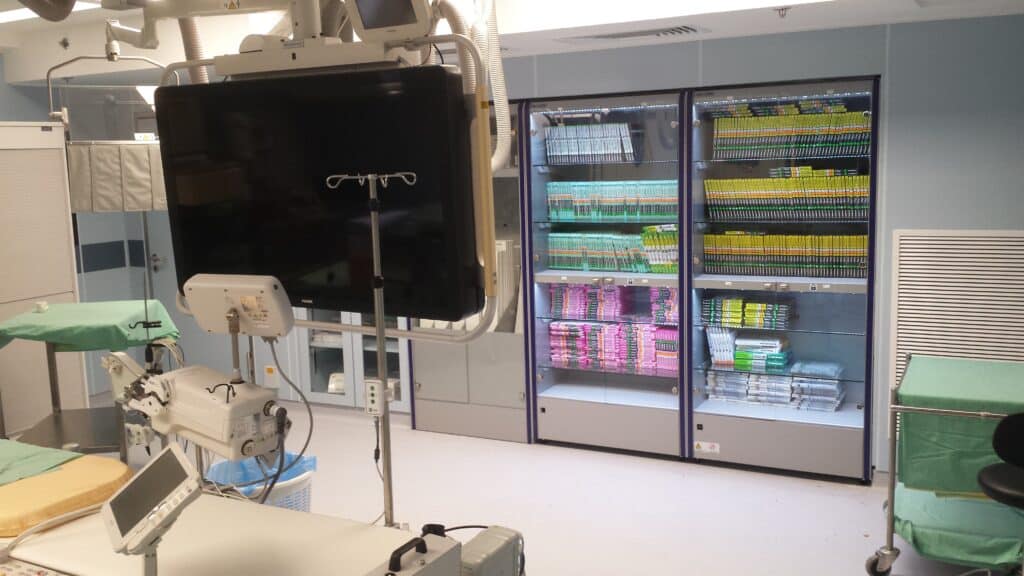What’s inside:
Tired of dealing with stock-outs? You’re not alone. Stock-outs can be a major headache for healthcare providers, but don’t worry, we found some easy fixes.
In this blog, we’ll explore the causes of stockouts and offer practical solutions to boost medical inventory management.
- Understand the impact of stockouts
- Identify the key medical inventory challenges that cause stockouts
- Discover data-driven technology that prevents stockouts
Let’s dive in!
In recent years, there has been growing recognition of the critical role medical inventory management plays in delivering timely, high-quality healthcare.
The COVID-19 pandemic was a wake-up call for many, putting the spotlight on the management of medical supplies and exposing weaknesses in the hospital supply chain that affected patient health, as well as the organization’s financial health.
Today, we’re going to investigate the issue of inventory stockouts in healthcare and discover how addressing stock management challenges can enhance operational efficiency, reduce costs, and ultimately improve patient outcomes.
The Impact of Stockouts on Healthcare Organizations
Efficient hospital operations depend on the effective medical inventory management of items such as medical devices, implants, and bulk supplies.
These vital supplies need to be available in the right type, right size and in the right place at the right time. Understanding the inventory requirements of planned surgeries and planning for emergency surgeries is a complicated task. If providers get it wrong then they face the issue depleted stocks.
There are many medical inventory management repercussions of stock-outs in hospitals and surgery centers.
Delayed Healthcare
The obvious impact of poor medical inventory management is the disruption of patient care. When vital inventory items are out of stock, it risks delayed and cancelled surgeries which can have an impact on patient safety.
Delaying patient surgery can result in healthcare complications, low patient satisfaction, and even legal issues.
Healthcare providers need to be able to plan for future healthcare delivery and ensure that the right medical inventory is available when needed. This requires insight into inventory levels and future surgeries planned.
Emergency Orders
To avoid disruption of surgical schedule, stock-out situations typically lead to emergency orders being placed. Although this ensures the patient receives the timely treatment, they need it also has wider repercussions.
🔹 Cost: This purchasing method is extremely expensive as last-minute orders are premium-priced.
🔹 Time: Responding to stockouts with emergency orders drains staff time – both for the nurse organizing the delivery, as well as the back-office team who need to process the paperwork.
🔹Documentation: Non-stock items are time consuming to document, involve manually keying in data, and risk being incompletely recorded or not being recorded at all.
Last minute deliveries organized to handle stock-outs carry a cost.
Challenges in Medical Inventory Management
So, let’s look at some of the main medical inventory management challenges faced by healthcare providers.
| Medical Inventory Management Issue | How it affects providers’ medical inventory management |
| Inaccurate inventory data | One of the biggest challenges for providers is gaining oversight of their medical inventory, which may be located across an entire network, or could just be a small hospital with tens of supplies spaces. Whatever the size and scale of an organization’s inventory, the issues are exactly the same.
Traditional manual counts and spreadsheet management is failing to provide the real-time accuracy required for effective inventory management. There are two key data collection points that drive effective stock management – stock tracking and utilization tracking. |
| Stock tracking inefficiency | This involves gaining a clear overview of every item in stock – where it’s located and full product details. When the item is removed the system needs to register it is no longer in stock, but this action alone doesn’t signal it has been used. |
| Inventory wastage | One under-reported issue associated with stock-outs is wastage. When expiry management is inefficient it’s common for nurses to discover entire batches of products that are no longer safe to use. Whole SKU stocks can therefore suddenly be depleted and need replacement. This bears a double cost – the wastage of the original investment and the need to purchase additional stocks to replace the unsafe stock. Automating expiry management can prevent wastage and remove a reason for shortages and stock-outs. |
| Poor usage tracking | A vital data collection point is therefore the point-of-use, where the confirmation of consumption can be made.
When an item is removed from stock and confirmed as utilized, this feeds clear information into the supply chain system, Items that were removed but not recorded as used come into another category, and need investigation by the provider. They could have been:
Prompt action can help to gain clarity over the status of these items and ensure the system is updated. |
| Demand forecasting difficulties | This is a common issue. Demand forecasting is reliant upon prompt, high quality data on stock levels and utilization. If this information is available then usage trends can help predict future needs and this may result in par or min/max adjustments being made to specific SKUs that will help to ensure the continuity of supplies. |
Effective Supply Chain Management
Sometimes external factors can affect stockouts so boosting supply chain efficiency can be key here:
🔹 Diversifying supply chain: Identifying vital supplies and looking at diversifying vendor options can also help to prevent stock-outs. Sometimes supply chain disruptions are local to specific areas, so having other vendor options can protect your supplies
🔹 Supply chain visibility: An important aspect of supply chain partnerships is collaboration. Healthcare organizations are discovering the power of shared data, which strengthens trust and transparency between partners. In addition, real time data and automated requisitions are helping to put an end to stock-outs.
🔹Consignment Inventory: When consignment arrangements are in place, this requires close partner collaboration and a joint understanding of stock levels and utilization. Shared data is helping to boost consignment efficiency and put an end to data dispute.
🔹Vendor-managed inventory relies on real-time data to ensure efficient expiry management and stock control.

Data-Driven Medical Inventory Management
In recent years inventory management systems have developed greater data collection accuracy and more advanced data processing capabilities. These are vital improvements that help providers to gain full oversight and control of of their inventory.
This is how technology is boosting inventory data to tackle stock-outs:
Real-time inventory visibility: Automated medical inventory management systems such as RFID smart cabinets and mobile scanners finally provide the real-time visibility needed for efficient inventory management. In addition, Kanban and PAR automation is a growing trend, ensuring that medical supplies in the surgery setting, as well as Med Surg, OBMs etc, can all be efficiently tracked.
Accurate usage data: Once a weak point for many, new, advanced point of use systems are changing the game. AI vision is the latest method of capturing usage, delivering complete and correct surgical supply records, and enabling providers to fully track consumption. When the EHR is a true reflection of supply utilization, the organization can prevent stockouts by implementing demand-lead replenishment.
Advanced analytics: Data collection is the foundation of stock management, but once collected, data processing is what makes it so powerful. Modern software that uses machine learning algorithms, as well as predictive analytics that can take account of internal and external factors. The speed of AI analytics far exceeds traditional methods and can spot emerging trends and data patterns that humans are likely to miss. This data can be used to optimize inventory levels, taking account predicted levels of need. This data helps providers to keep up with demand and prevent stock shortages.
Stockouts are a disruptive factor in medical inventory management but technology can be effectively used to prevent your running out of critical supplies:
🔹 Implant tracking technology such as RFID smart cabinets and mobile wands are an excellent way to achieve item level management of high value items.
🔹 Automated Kanban and PAR systems are enabling medical supplies to be carefully monitored and promptly replenished, while being centrally managed across all healthcare locations.
🔹 New point of use systems powered by AI and image recognition are finally ensuring accurate supply utilization records and enabling data-driven procurement.
Automated medical inventory management systems are replacing inaccurate manual counts with timely, quality data that automatically drives through accurate restocks, ensuring the continuity of supplies.
Preventing stock outs in medical inventory management
Effective medical inventory management is crucial for patient care and operational efficiency. By implementing strategies like data-driven insights, robust supply chain partnerships, and advanced technologies, healthcare organizations can prevent stock outs, reduce costs, and improve overall performance.
Contact us if you’re looking to boost your inventory data to gain a balanced inventory and prevent stock outs?






